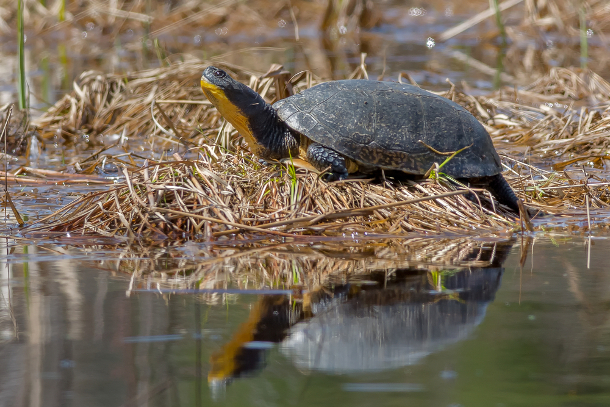On Nature’s Death Row: Ontario’s Vanished ‘Carolinian’ Forest
It used to stretch from Oshawa to Windsor. Now, development encroaches on the last scraps of a once-great woods. Part of a series.
The tranquil Blanding’s Turtle faces a vanished ecosystem in Southern Ontario. Turtle photo via Shutterstock.
[Editor’s note: In this Tyee Solutions Society series, reporter Chris Wood profiles what death row looks like for endangered species and their landscapes in three Canadian provinces.]
The hum of midday traffic penetrates the August foliage, adding to the dense buzz of insect life filling the air above a pond. Green discs of lily pads make geometric art on its sheltered surface; darting, electric blue dragonflies dance along it. On a fallen tree acting as a grey ramp from the water, short legs propel a high-domed brown shell into the sun. There it settles, and an ancient-looking head emerges, stretching to expose a long, lemon-yellow throat. For this Blanding’s Turtle, barely middle-aged at 30, death row is a bright clearing in the woods not far from the Detroit River.
Viewed from the air or on a map, the turtle’s prison appears as one of five patches of green squeezed between expressways and the former Windsor, Ontario, raceway, a few kilometres from Canada’s busiest truck crossing into the United States at the Ambassador Bridge and adjacent to a second crossing being built at a cost of $1 billion.
The not-quite-contiguous patches of green known collectively as the Ojibway Prairie Complex, a fractured mosaic altogether fewer than 250 hectares in area, five kilometres long and three at the widest, were once part of a richly varied landscape of hardwood forests, grassland prairie and wetlands that stretched unbroken from here to the St. Lawrence River at the eastern end of Lake Ontario, and as far north as the granite border of the Canadian Shield.
…click on the above link to read the rest of the article…
